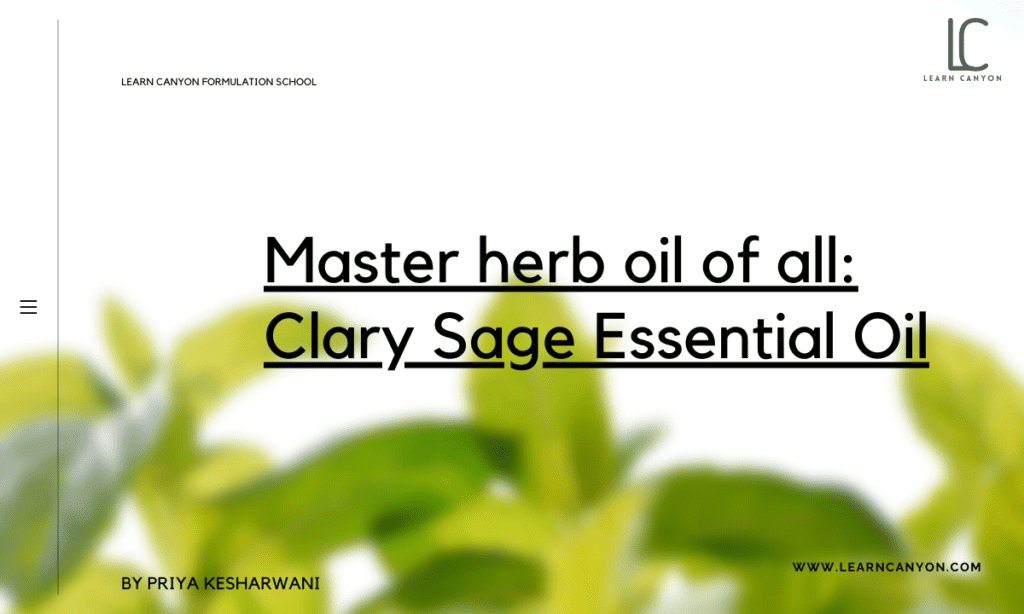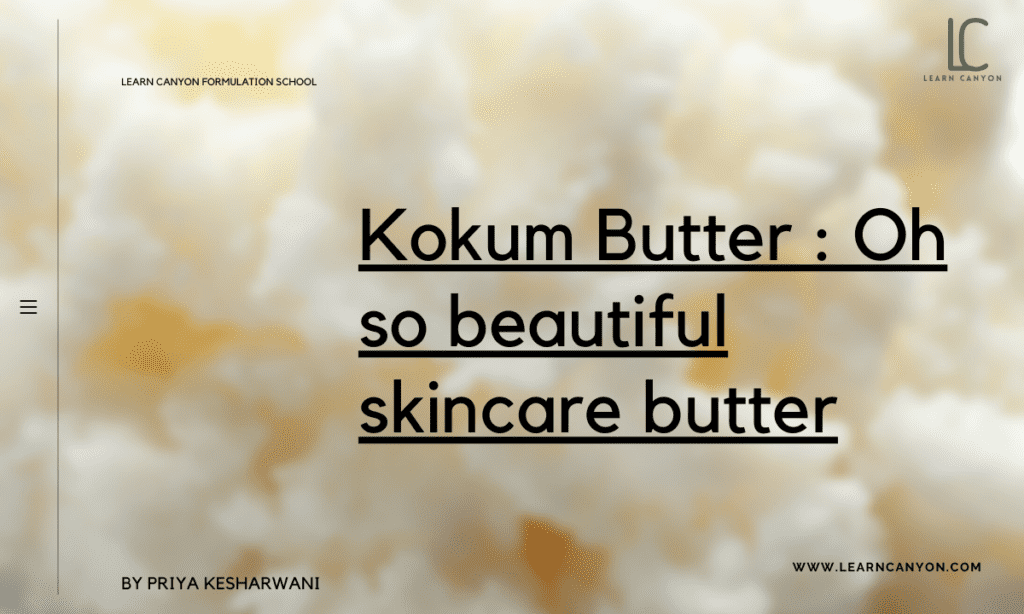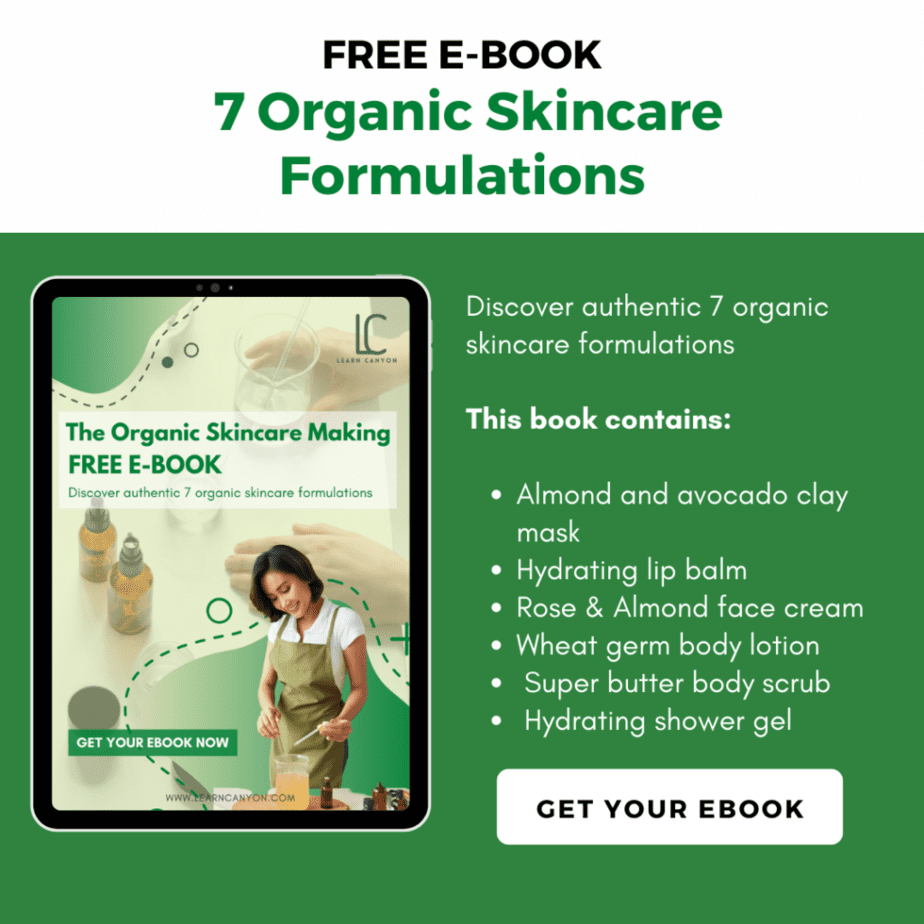
Clary sage (Salvia sclarea) essential oil

BENEFITS AND APPLICATIONS OF THE "MASTER HERB" OIL
Have you ever wondered if there was an element that may improve both your health and your appearance? There are a lot of them, but clary sage oil sticks out.
The clary sage plant’s blooms and leaves are used to make the oil. This oil, which is said to have originated in Europe, is full of goodness, including eye benefits.
What is Clary sage (Salvia sclarea) leaves/flower essential oil?
Clary sage is a biennial flowering plant that blooms every two years. It’s a Mediterranean-born species. The flowers and leaves of the Salvia sclarea plant are used to make clary sage oil.
The Lamiaceae family includes it. Clary wort, clear eye, and carry are some of the other names for this plant. The country that produces the most clary sage oil is Russia.
Southern Europe and the Mediterranean region are home to clary sage. Flowers range in colour from violet to lilac to pale yellow, depending on the plant’s origin.
It’s a fragrant shrub with huge oval grey-green leaves that smell delicious and honeyed when crushed. Clary sage oil is fragrant throughout the plant, which is covered in glandular hairs that contain essential oil.
| What is it? | The herb Salvia sclarea is used to make Clary Sage Essential Oil. |
|---|---|
| INCI | Salvia sclarea oil |
| Appearance | Purplish blue flower spikes |
| Texture | Thin and soft |
| Recommended Usage | 1-10% |
| Solubility | Oil soluble |
| Melting point | NA |
| Boiling point | 210 °C |
| pH | NA |
| Aroma | Very earthy |
| Why do we include it in formulations? | It tones, tightens, and strengthens the skin thanks to its high antioxidant concentration. |
| How to work with it? | Included in the formulation's water phase. Avoid heating if at all feasible. |
| Applications | Anti-inflammatory, astringent, and deodorant It has a cooling effect that helps to relieve inflammation and calm rashes on the skin. |
| Absorption rate | Average to fast |
| Strength | Address acne, oil production, and inflammation to improve skin health. |
| Weaknesses | Expensive and difficult to obtain. |
| Substitution | Lavender, Ylang Ylang, Grapefruit, SandalwoodStored in a cool, dark and dry place. |
| How to store it? | Stored in a cool, dark and dry place. |
| Shelf life | The clary sage has a four-year shelf life. |
| Type of ingredient | Essential oil |
|---|---|
| Main benefits | Calming, soothing, & balancing |
| Who should use it | Both oily and dry skin types benefit from Clary Sage Essential Oil. |
| How often can you use it? | Are great for daily use. |
| Works well with | Work well with Bergamot, Clary Sage, and Geranium |
| Doesn't work with | Clary sage isn't known to react negatively with any other substances. |
| How to use | When the formulation is cooling down, it is added. |
Mechanisms of action
Linalyl acetate is an ester found in clary sage essential oil. This potent ingredient serves to minimise skin inflammation, mend the epidermis, and soothe the skin.
Cistus and Petitgrain oils are also quite calming, and can aid to soothe an inflamed complexion. Consider skin-soothing chemicals to be the level-headed friend who never loses her cool as the temperature rises.
Skin-soothing chemicals work to reduce irritation symptoms like redness and blotchiness caused by environmental factors. They accomplish this by gradually calming sensitising elements on the skin’s surface, preventing the causes of distress from making the skin appear to be acting up.
Benefits of Clary sage (Salvia sclarea) leaves/flower essential oil
- Clary Sage Essential Oil contains linalyl acetate, which is a soothing ester. This potent chemical reduces skin irritation, heals the epidermis, and soothes the skin.
- Cistus and Petitgrain oils are also very relaxing and can help to calm an inflamed skin.
- The power of Clary Sage Essential Oil to balance hormones is well-known. This can help to ensure that the epidermis produces just the proper quantity of oil to keep your skin nourished without going overboard!
- Clary Sage Oil reduces the likelihood of breakouts, acne, and oily skin by regulating sebum output.
- Its high antioxidant concentration tones, tightens, and strengthens the skin and muscles, as well as reinforcing hair and preventing hair loss.
Side effects of Clary sage (Salvia sclarea) leaves/flower essential oil
Clary sage is an essential oil that should not be applied to the skin undiluted or swallowed. There are no side effects.
How to use it in formulation?
Added in the cool down phase of formulation.
Works well with other ingredients
Bergamot, Clary Sage, Geranium, Ginger, Lavender, Lemon, Neroli, Orange, Rosemary, Tea Tree, and Vetiver essential oils work nicely together.




